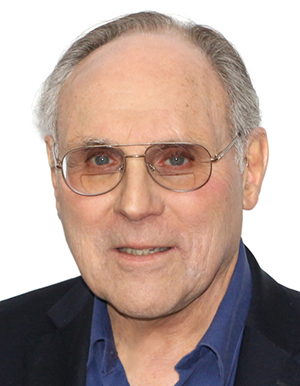
Alex Bell, Department of Chemical and Biomolecular Engineering, University of California, Berkeley
"Catalysis by Single Metal Sites Supported on Silica – The Importance of Local Site Environment and Site Distortion"
Abstract:
Catalysts consisting of single isolated sites have become a subject of great interest in the field of catalysis, since they offer the possibility of creating active centers with a high degree of control in terms of local composition and structure. Such materials are the closest analog to homogeneous catalysts in heterogeneous catalysis. The challenge is to secure the active metal site in such a way that it does not sinter into metal nanoclusters at high temperature. This talk will show that this goal can be achieved by grafting or more metals (e.g., Sn, Zn, Hf, Y, La, Zn4-6Pt, SnPt3) into the silanol nests formed by dealumination of zeolite BEA on to the surface of Silicalite-1. Characterization of such materials by 1H and 29Si NMR, HAADF-STEM, and XANES and EXAFS reveals a number of structures, such as [(≡SiO)2Zn2]2(HO-Si≡)2, (≡SiOZn)4-6Pt, (≡SiOSn)4Pt3 that are active for propane dehydrogenation, structures such as (≡SiO)3Hf-OH…O(H)Si≡ that is active for acetone condensation to isobutene, and structures such as (≡SiO)3La-OH…O(H)Si≡ that is active and selective for the condensation of acetaldehyde and ethanol to 1,3-butadiene. We will also show that product adsorption can lead to distortion of the structure of (≡SiO)3Ti-OH resulting in their activation for the epoxidation of cyclohexene by H2O2. The discovery of the effects of site distortion on catalytic activity in this case was only possible by the combination of experimental and theoretical techniques.
Bio:
Dr. Bell is currently Professor Emertitus in the Department of Chemical and Biomolecular Engineering at the University of California, Berkeley and is an Affiliate at the Lawrence Berkeley National Laboratory. He received his B.S. and Ph.D. degrees in chemical engineering from the Massachusetts Institute of Technology. His research specialty is catalysis and chemical reaction engineering with an emphasis on understanding the fundamental relationships between catalyst structure and composition and catalyst activity and selectivity. The objectives of his program are pursued through a combination of experimental and theoretical methods, enabling the attainment of a deeper understanding of the core issues of interest than can be achieved by using either approach alone. Dr. Bell has published nearly 800 papers for which he has received numberous national and international recognition. Dr. Bell is a member of the National Academy of Sciences, the National Academy of Engineering, a member of the American Academy of Arts and Sciences, and a foreign member of the Russian Academy of Sciences.